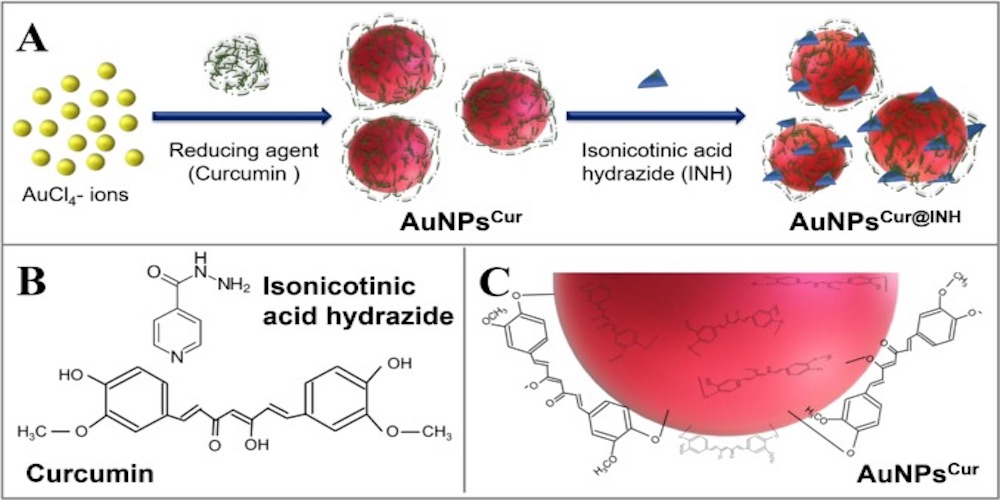Improving Cancer Management and Treatment

A novel site-specific drug delivery method using gold nanoparticles can improve management and treatment of cancer.
There are more than 200 different types of cancers known which are currently being treated through surgery, chemotherapy, and radiation therapy. Many of these cancers can be cured if detected early and treated effectively. However, the available treatments are time-taking, expensive, and trigger numerous other side-effects and the actual health benefits of the therapy do not reach the cancer patients effectively.
Researchers at Amity University Rajasthan, Jaipur have developed therapeutic agents with the help of nano-biotechnological approaches using a unique solution of ‘gold nanoparticles’ that helps in improving the site-specific drug delivery for cancer disease management and its effective treatment.
Dr. Hemant Kumar Daima, Dr. Akhela Umapathi and Prof. S.L. Kothari from the Amity Centre for Nanobiotechnology and Nanomedicine (ACNN), have formulated ‘gold nanoparticles’ solution with a distinctive functional surface containing biomolecules and antibiotics for improved anticancer activity through selective generation of reactive oxygen species (ROS). The results have revealed that the appropriate surface corona on the gold nanoparticles was essential for effective cancer treatment in a selective manner.
The research was extended toward lung cancer cells using functional silver nanoparticles and selective anti-cancer effect originating from surface chemistry of silver nanoparticles was demonstrated in a paper published in the study published in the journal Colloids and Surfaces A: Physicochemical and Engineering Aspects. Both the studies have provided deeper understanding regarding the mechanism of anti-cancer actions of the functional nanoparticles.
The research was a global effort with researchers from University of Miyazaki, Japan; and RMIT University, Australia actively participating in it. Now, the team is planning clinical studies on the formulated nanoparticles.
Some of the important physicochemical characterization and biological studies of gold nanoparticles were performed on Fourier-transform infrared spectroscopy (FTIR), Fluorescent microscopy facilities acquired through the Fund for Improvement of S&T Infrastructure (FIST) programme of the Department of Science and Technology, Government of India. The study will open new opportunities for better cancer management and treatment, and pave a way for future nanomedicine even beyond cancer.
Highlights of the Work
• A new approach to improve potential of gold nanoparticles is demonstrated by developing a suitable surface corona.
• The curcumin and isonicotinic acid hydrazide formed a functional corona on gold nanoparticles for anticancer action.
• Investigations on human lung squamous carcinoma and human lung fibroblasts indicate selective toxicity.
• The work reveals that facile surfaces on nanoparticles are important in controlling bio-medical potential of nanoparticles.
In essence, authors of the study say that besides physicochemical properties, careful design of biomolecular surface corona can dictate therapeutic potential of nanoparticles. “ Therefore, we demonstrate a new approach to improve the anticancer potential of gold nanoparticles (AuNPs) by developing a strong corona of curcumin and isonicotinic acid hydrazide (INH) around them.
Here, curcumin-reduced AuNPsCur are surface-functionalized with biologically active INH (AuNPsCur@INH). Our investigations on human lung squamous carcinoma (LK-2) and human lung fibroblast (TIG-120) cells indicate selective toxicity of functionalized nanoparticles. Conjugation of curcumin and INH on the surface of AuNPs induced anticancer action through reactive oxygen species (ROS) generation. The further extension of this study revealed apoptosis and morphological changes in LK-2 and TIG-120 cells, respectively. Moreover, the anticancer potential of these nanoparticles is compared with standard cisplatin. The outcomes of the work determine that the facile functional surfaces on nanoparticles can be important in controlling the biological activities of nanoparticles”.



